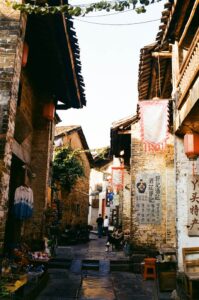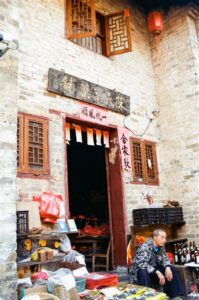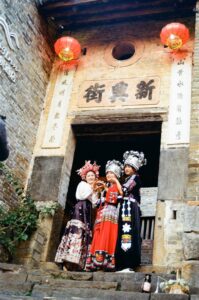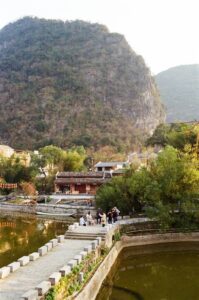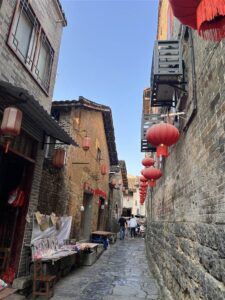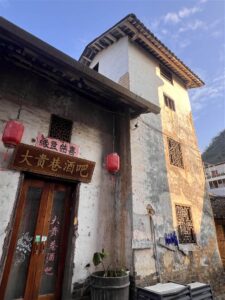Magnificent Guilin — The History of Huangyao Ancient Town

A leisurely walk within the ancient town of Huangyao will take some three hours or so. I began walking into the ancient town from Qianxing Square and came across the main street with all kinds of vendors and restaurants. The storefronts were all well-kept and the walk was pleasant with many photogenic spots.
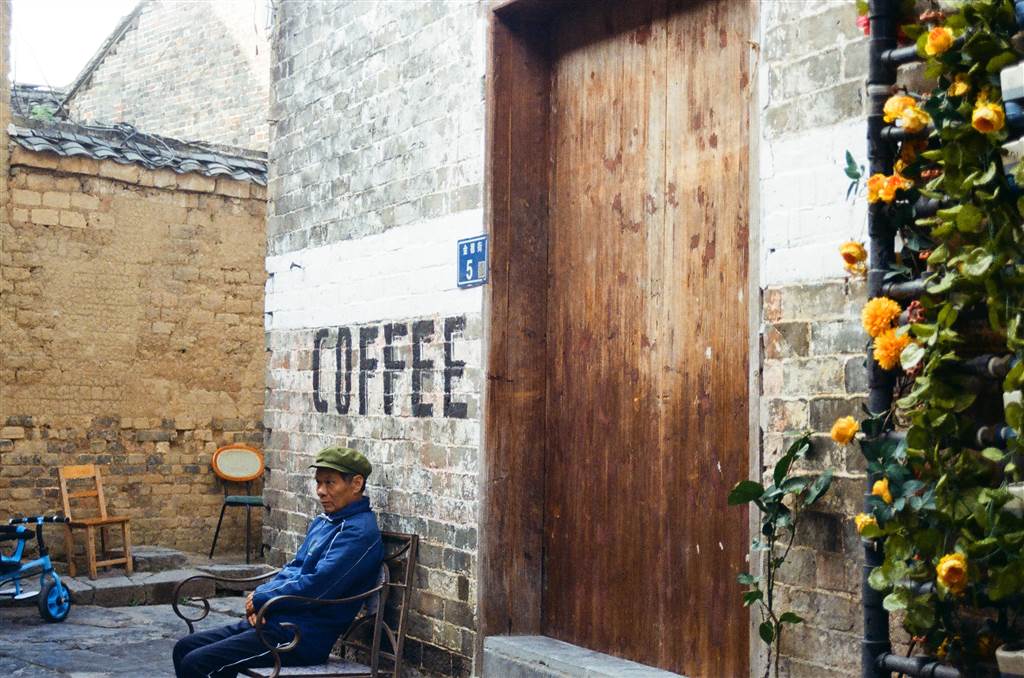
Huangyao has had a history of over one thousand years. The town came into being during the Kaibao Period of the Song Dynasty. The ancient town went through a period of expansion during the Ming Dynasty, and it thrived during the Qing Dynasty. Most of the old buildings that make up the antique face of Huangyao were of the Ming and Qing dynasty era.
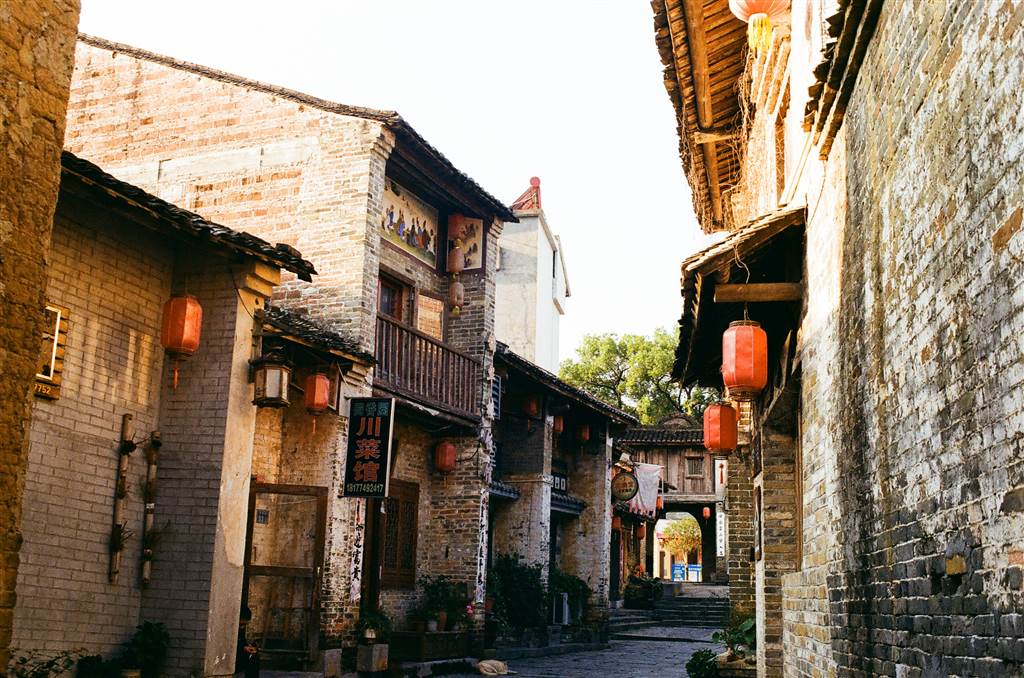
Because the villagers that live there mostly had the surname of Huang and Yao, this ancient town became known as Huangyao.
Some Salient Scenic Features of Ancient Town
Even though Huangyao is relatively low key as a tourist destination, it is well-known for a few things. In the following I will go through some of the scenic sites in Huangyao. Its scenery by the creek has been featured on a postage stamp series, China Ancient Town II Special Stamp.
The Cobblestoned Main Street
There were not very many tourists on this warm winter afternoon, but the main street of Huangyao was lively. There were many vendors selling all sorts of curios, some featured the specialty products of Huangyao. Needless to say, there are restaurants after restaurants standing in this part of town. However, it did not occur to me that too many of those eateries were actually open for business.
This cobblestoned part of the town is very picturesque and I was just-so-happy that I made it there, even though there would not be much time left before dusk sets in.
All over Huangyao it breathed antiquity, along with a sense of self-assuredness over its own historic beauty. The people there were very relaxed. They did not plead customers to buy their products, nor did they even call out to me to take a look.
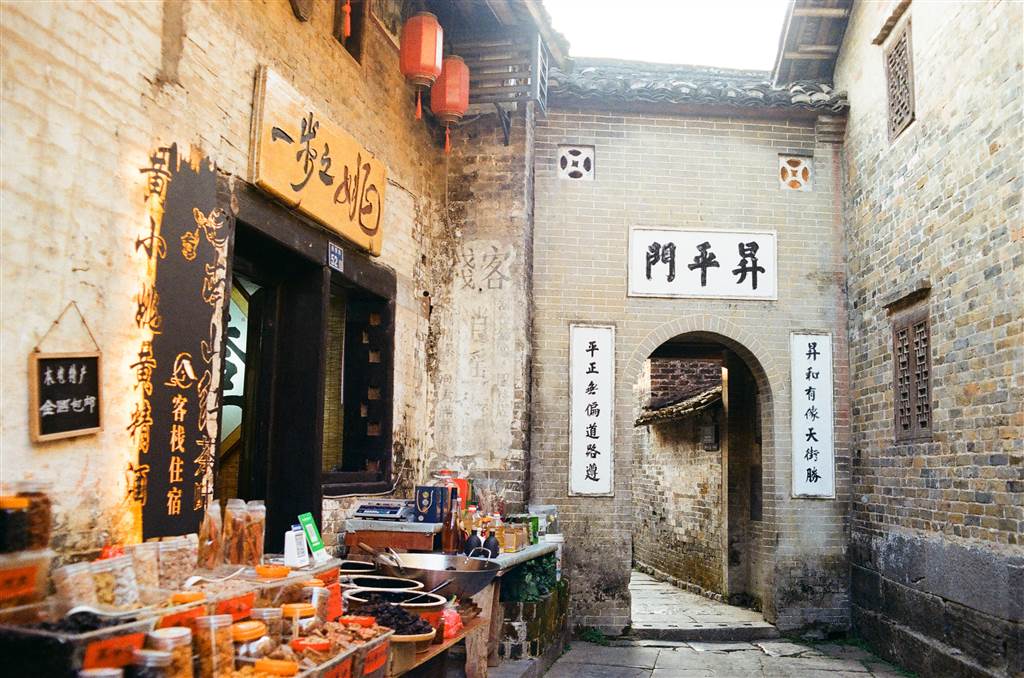
The walk offered plenty of sensory pleasures. The ancient brick buildings, humble as they were, seemed to stack one against the other endlessly. You turn a corner and there were more of those blue brick buildings, plastered in different shades of earthy mud. Its structures having endured some of the most significant crossroads in China’s history, the ancient city exhibits its humble beauty crafted by the very hands of time.
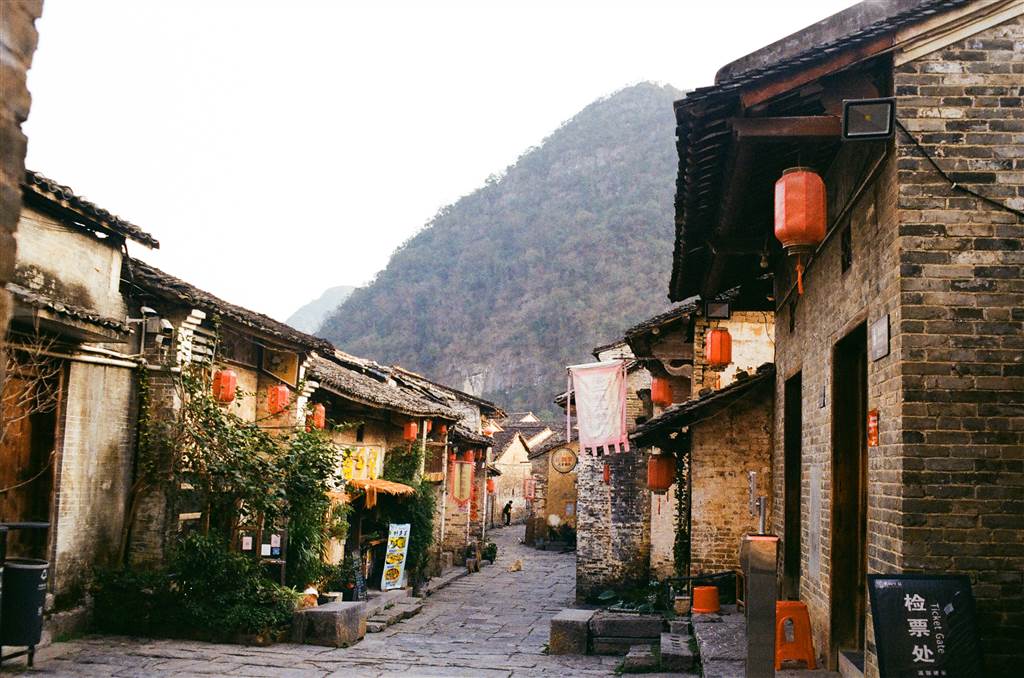
Occasionally you would come across some traces of communist propaganda, as Chairman Mao seemed to be revered still in Huangyao—but even that hallmark of modernity appeared to be dated in 21st century China.
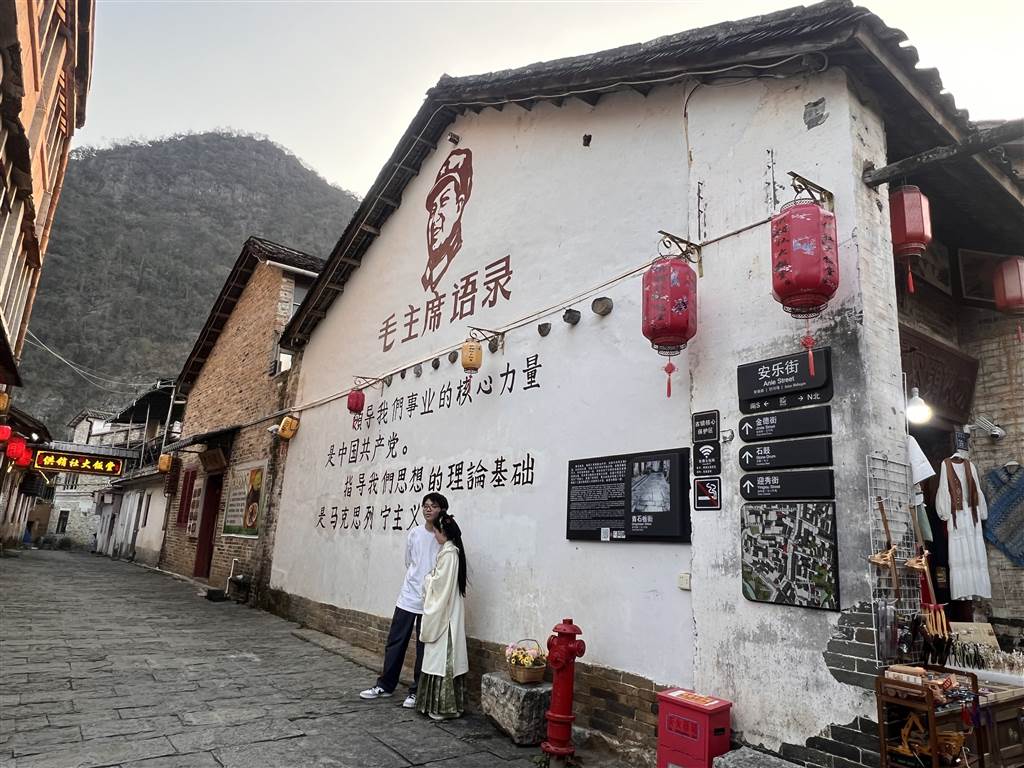
The Ancient Well of Immortals

The Ancient Well of Immortals belongs to a relatively older era of the ancient town’s history. Build in the Wanli reign of the Ming Dynasty, the well comes with the legend that this was where the seven immortals came and play. There are five sections of the well. The “inner ponds” are for drinking water and washing vegetables, and the “outer ponds” are for washing clothes. Every year on the 7th day of the 7th month of the lunar calendar, the town celebrates the “Water-taking Festival.” The well is still being used for its intended purpose today.
The Dailong Bridge
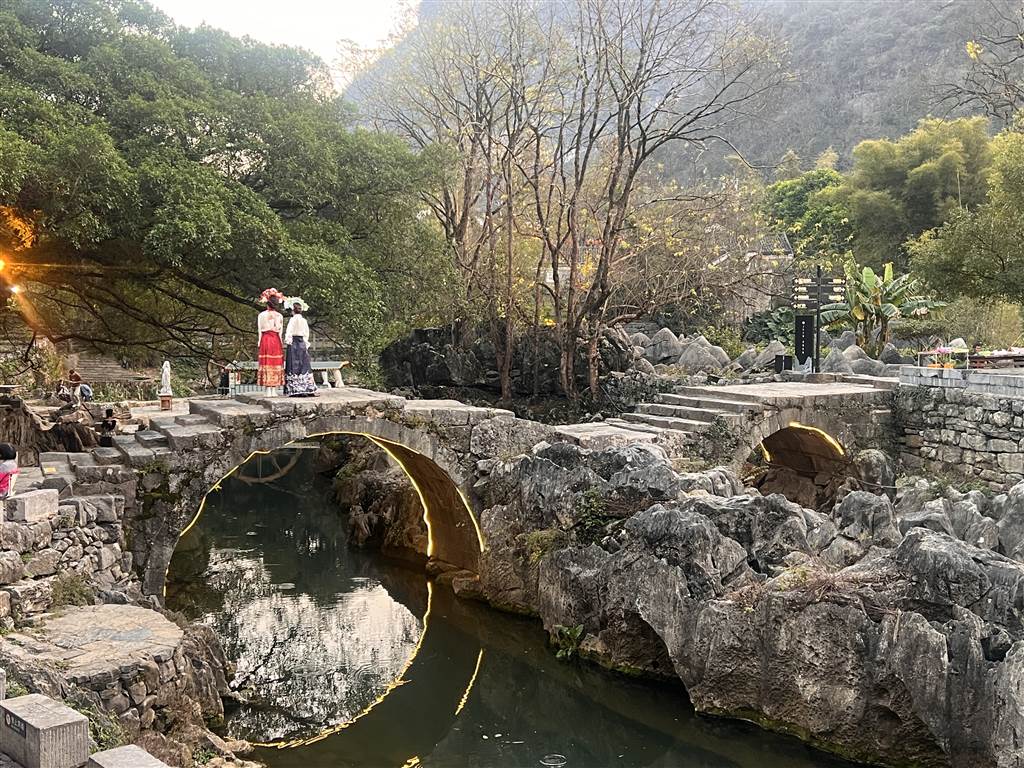
The Dailong Bridge is namely the most-photographed scene in the ancient city of Huangyao. This scenery, along with the beautiful creek, Yaojiang, and the mud-plastered buildings behind, is what has been featured on a postage stamp issued in 2016.
The Dailong Bridge was built during the Wanli reign of the Ming dynasty. It was restored during the Qianlong reign of the Qing dynasty. It is believed that this bridge is what channels the “dragon’s breath” from the nearby Zhenwu Mountain, therefore it was named “dailong,” meaning “bringing forth the dragon.” There are two arches, one large, one small, beneath the stone throughway that provides pedestrian access between the shores of the narrow creek of Yaojiang.
The Dragon Gate Ficus

At the advanced age of 800 years, the Dragon Gate Ficus stands tall and vibrant at the mouth of Yaojiang creek, guarding the waterway that would nurture the eastern shores of the Huangyao Ancient City. Its aerial roots entwined within itself in a “circle of life,” the tree shows a teardrop hollow and then extends its roots further with a straight arm, the woven fabric of century-old roots propping a luscious crown of evergreen leaves above. In the cool of the tree’s umbra one would feel inclined to sit for a while, right by the droning murmurs of the creek Yaojiang.
Yikongzhigu

The Yikongzhigu is an important gatehouse in the ancient city. Its name came from The Book of Poetry, meaning that “because heavens blesses the stability of this place, it stands steady and strong.” Built during the early Qing Dynasty, the gatehouse comes with two stories. The upper story is for guards as a watchtower, the lower story is for passage inside and outside of the ancient city.
The Guo Family Courtyard
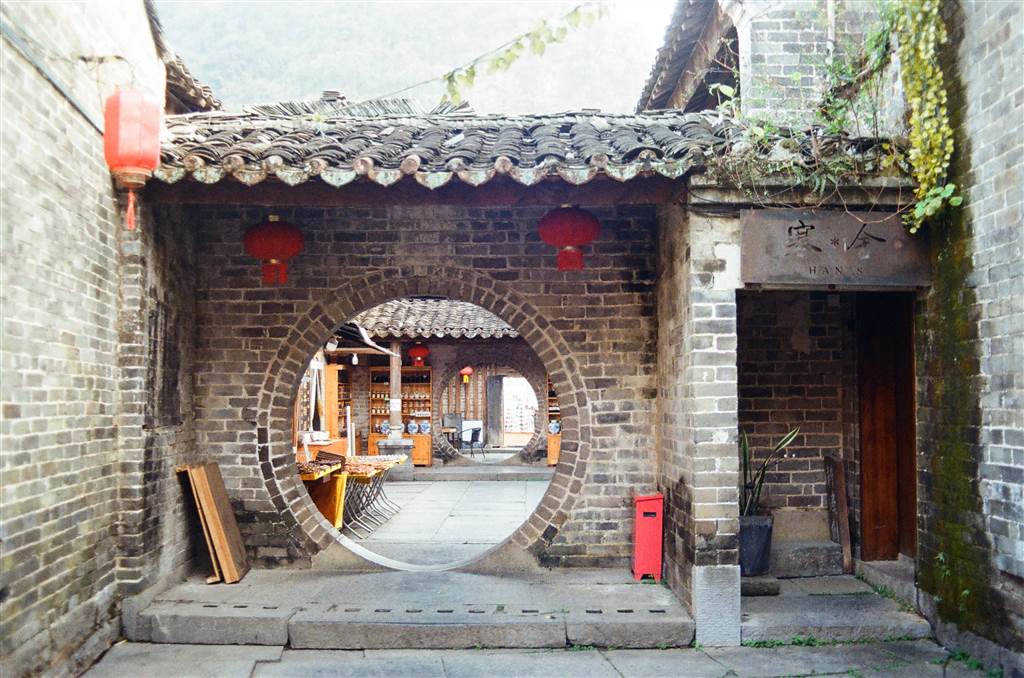
The Guo Family Courtyard was built during the reign of the Daoguang regin in the Qing dynasty. According to descriptions on site, the Guo Family Courtyard has a layout of the “flat-ground courtyard building” typical in the Huangyao Ancient Town, composed of the front hall, courtyard, main halls and the wing rooms. This structure would be considered a grand mansion in the ancient town. The courtyard is open for visitation and it comes with some really beautiful, perfectly aligned round entrance archways.
The Lake

The lake is also where the most iconic photographs are taken of Huangyao, especially with the typical peak clusters of Guilin as its backdrop. It was nearing dusk and so the colors made the scenery especially poignant with a touch of poetry.
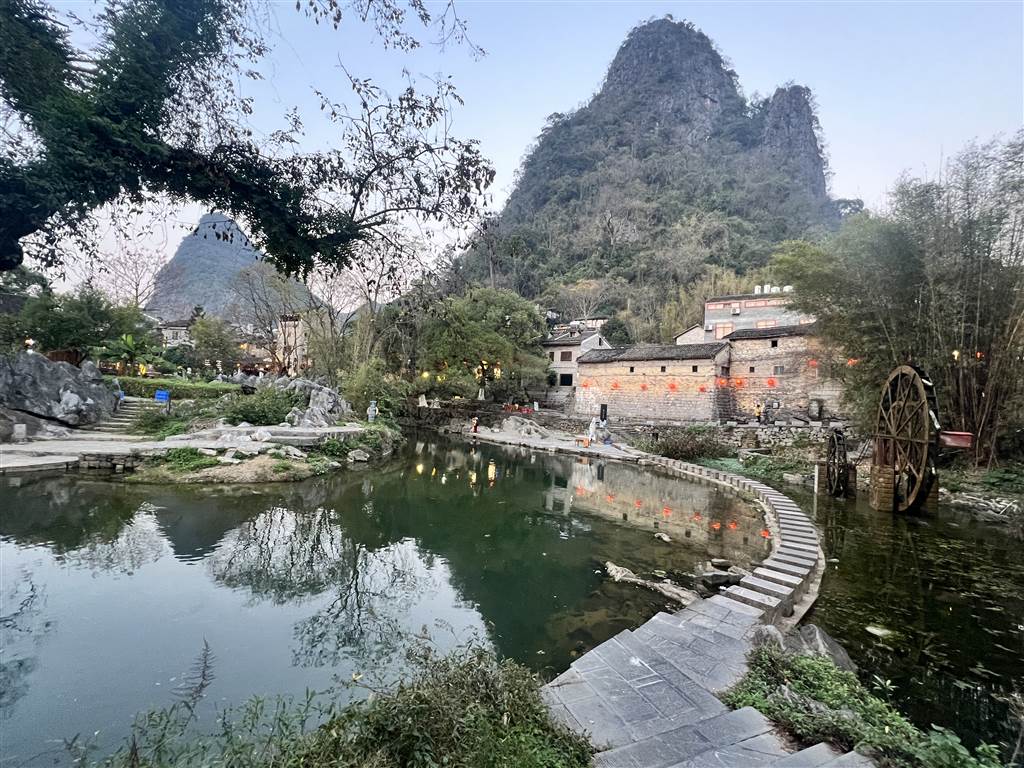
Sources
Descriptions on site at the Huangyao Ancient Town.


